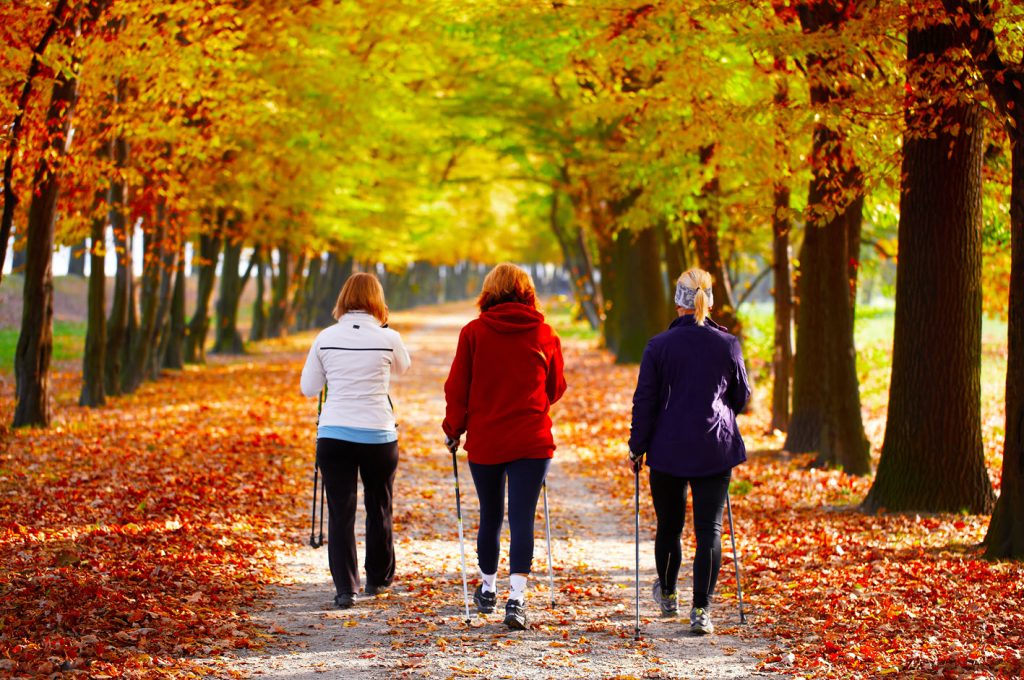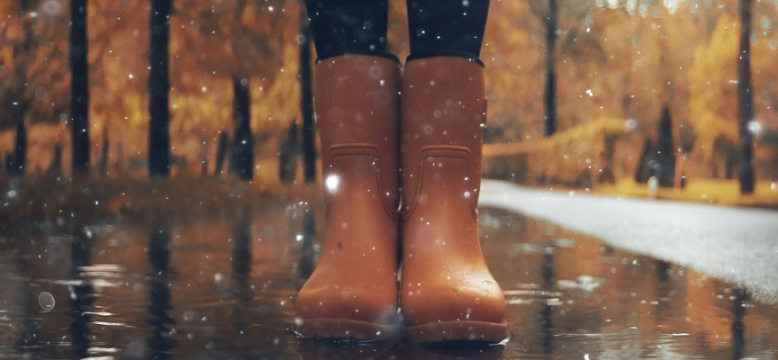Why Does My Foot Pain Get Worse In Winter?
If you find winter a real pain in the foot you’re not alone. As the temperature drops to single digits and below, and the wind and rain sets in, clients have already started asking “why does the cold weather make my foot pain worse?”. Many people believe and feel that their pain is significantly worse during the autumn and winter months compared to the warmer summer months. If this sounds like you then keep reading because we’re going to explore why pain can be worse in colder weather, what some of the common winter foot problems are, and I’m going to give you some tips to help you deal with this…
There is no one explanation for why dropping temperatures can make your foot pain worse. One theory relates to drops in barometric pressure for example, as cold fronts move through. With dropping barometric pressure, the air pressure pushing against your body decreases, which can cause tendons, muscles, and the surrounding tissues to expand. Because of the confined space within the body, this can cause pain, especially in people with arthritis and fibromyalgia. This phenomenon may also help to explain why some people can seem to predict weather changes just by how their joints feel.
 As the days get colder our muscles can also feel stiffer and this can make moving more painful. In addition, stiff, tight muscles are more susceptible to cramps and spasms, and if you have ever had a cramp or a spasm, you know that it can be really painful. We also tend to move less in winter as it gets darker earlier, and cold wet weather is not so inspiring for daily exercise. This also contributes to stiffer muscles and joints and can increase pain.
As the days get colder our muscles can also feel stiffer and this can make moving more painful. In addition, stiff, tight muscles are more susceptible to cramps and spasms, and if you have ever had a cramp or a spasm, you know that it can be really painful. We also tend to move less in winter as it gets darker earlier, and cold wet weather is not so inspiring for daily exercise. This also contributes to stiffer muscles and joints and can increase pain.
“There’s a lot we can do to ease joint pain and stiffness. You don’t need to suffer in silence.”
Cold weather can also impact on nerves and nerve conduction, and people with nerve damage and nerve changes can experience increased pain as a result. On top of this we have less daylight hours and the sun is lower in the sky in southern Australia, meaning we have less chance of producing Vitamin D. Research has shown that vitamin D might play an important role in regulating mood and mood can have a significant impact on pain, and therefore Vitamin D deficiency could be another contributing factor to why people feel their pain is worse in winter.
What are some common foot pain problems that are worse in the cold weather of winter?
Arthritis and Bunions
There are more than 100 types of arthritis – including the common three, osteoarthritis, rheumatoid arthritis and psoriatic arthritis; all of which cause some form of joint pain or joint disease. The most common arthritic joint symptoms include swelling, pain, stiffness and decreased range of motion, and all of these you can experience with bunions too. As the weather gets cooler, the synovial fluid that acts like the grease and oil in our joints becomes more like sludge. This can impact on its ability to reduce friction in your joints and result in increased feelings of pain.
Chilblains
Chilblains is a condition common in people with poor blood circulation. It can also occur when feet are exposed to cold temperatures or sudden changes in temperature. This results in swollen, itchy and red spots on the skin. As we are more likely to have our feet exposed to colder temperatures and rapid temperature changes in winter, for example getting out of a warm bed and putting our feet on a very cold floor; this makes Chilblains a common winter foot pain complaint.
Blisters
We’ve all experienced a blister when we have worn poor quality or poorly fitted shoes. The extra pressure and friction against the skin causes the outermost layer of the skin to separate from the layers beneath. Fluid then fills the gap between the layers of skin to cushion and protect the skin below. Because we spend more time in shoes when it is cold, this tends to make blisters one of the most common winter foot conditions.
Raynaud’s Phenomenon
Similar to chilblains, Raynaud’s occurs when the skin is exposed to cold temperatures. The small blood vessels become constricted, and this limits blood circulation and oxygen to the feet (and hands) and can cause pain, blisters and also change the colour of your skin, turning it white, red, blue or purple.
Morton’s Neuroma
Morton’s neuroma can develop at any time, but it is especially common in winter. As we spend more time in shoes and socks to keep warm, and if those shoes and/or socks are too tight, they can cause your bones and tissue to place increased pressure against your nerves. This can cause pain, numbness, and a tingling sensation in the ball of your foot.
What can you do to fight those winter foot pains?
The good news is that you don’t have to suffer through your foot pain all winter season. With the proper measures and practices, you can significantly reduce and manage your winter foot pain. Here are some tips for protecting your feet during the chilly winter months.
#1 Keep Active
In life if you don’t use it, you lose it. Keeping active keeps your joints, muscles and associated soft tissues moving. It helps your circulation and keeps blood flowing to your extremities, especially the toes and this can really help with pain. It can be tough to exercise and move when its cold and wet outside but there are lots of indoor activities like yoga that can be done from the comfort of your lounge room. Just jump onto YouTube and you will find lots of classes that you can try. So, make the effort to stay active – your body will thank you for it.

#2 Wear good fitting shoes and socks
We love our thongs in Australia but as winter comes, boots and closed in shoes are needed to keep your feet dry and warm. Poorly fitted and unsupportive shoes can lead to foot pain; so, avoid wearing shoes that are too tight, worn out, and lack support. Ugg boots and slippers can work well as winter foot warmers too, but just remember these shoes have no support and are not designed to be worn all day.
Whatever shoe you choose we recommend that you always get your winter shoes fitted by a professional as the right fit will reduce the risk of blisters and Morton’s neuroma.
If you would like to know who our “go to” shoe retailers are in Adelaide, then let us know and we’ll send our list to you.
As for socks, woollen, cotton and bamboo socks are a great choice to help keep your feet warm and have the advantage over synthetic materials as they are breathable and help to wick moisture away from your skin – keeping your feet drier.
#3 Moisturise
As the temperature starts to drop, so does the humidity level. As a result, dry skin on the feet and heels is especially common in the colder months in Australia.
When the skin around the heels becomes dry, it can lose its suppleness and elasticity, and can split under simple pressures such as walking. These splits and cracks can be very painful, but with the regular use of a good quality moisturiser can be easily managed, and this can reduce the associated pain in your feet.
#4 Consider a Vitamin D supplement
Vitamin D is essential to help the body function properly and can help your mood, which can influence the level of and how you perceive pain. You can increase your Vitamin D intake by adding fatty fish and seafood to your diet. Mushrooms are also a great source of Vitamin D just put them in the sun for 15mins prior to consuming to maximise the Vitamin D benefit. You can also use a UV light or take a supplement when there is no winter sun available.
Like with all supplements it is best to discuss your individual needs with your health care practitioner so you can make an informed decision based on your personal circumstances.
Now if you a struggling with the cold we have a great article on 3 tips to keep your feet warm this winter here.
 We hope these tips help you, but if you have tried some or all these tips and your feet are still suffering, then seeking help from an experienced foot health professional, such as a podiatrist, can go a long way to helping your foot pain this winter. Remember there’s a lot that can be done to ease joint pain and stiffness. You don’t need to suffer in silence.
We hope these tips help you, but if you have tried some or all these tips and your feet are still suffering, then seeking help from an experienced foot health professional, such as a podiatrist, can go a long way to helping your foot pain this winter. Remember there’s a lot that can be done to ease joint pain and stiffness. You don’t need to suffer in silence.
If you don’t have a foot health professional or are not getting the results you were hoping for with your current one, then we would be happy to review your situation and provide you with our best recommendation, to keep your feet in tip top condition this winter. Just reach out and give Helen/Emma at our Kent Town centre on 8239 0800, or Wendy at our Glenelg centre on 8294 0100 a call, for a friendly chat to determine if we are the right place to help you, or you can book an appointment online right now by clicking here
Thank you for taking the time to read this article, and if you know someone who could benefit from reading this then please share it with them.
Wishing you the best of foot health.






No comments yet.